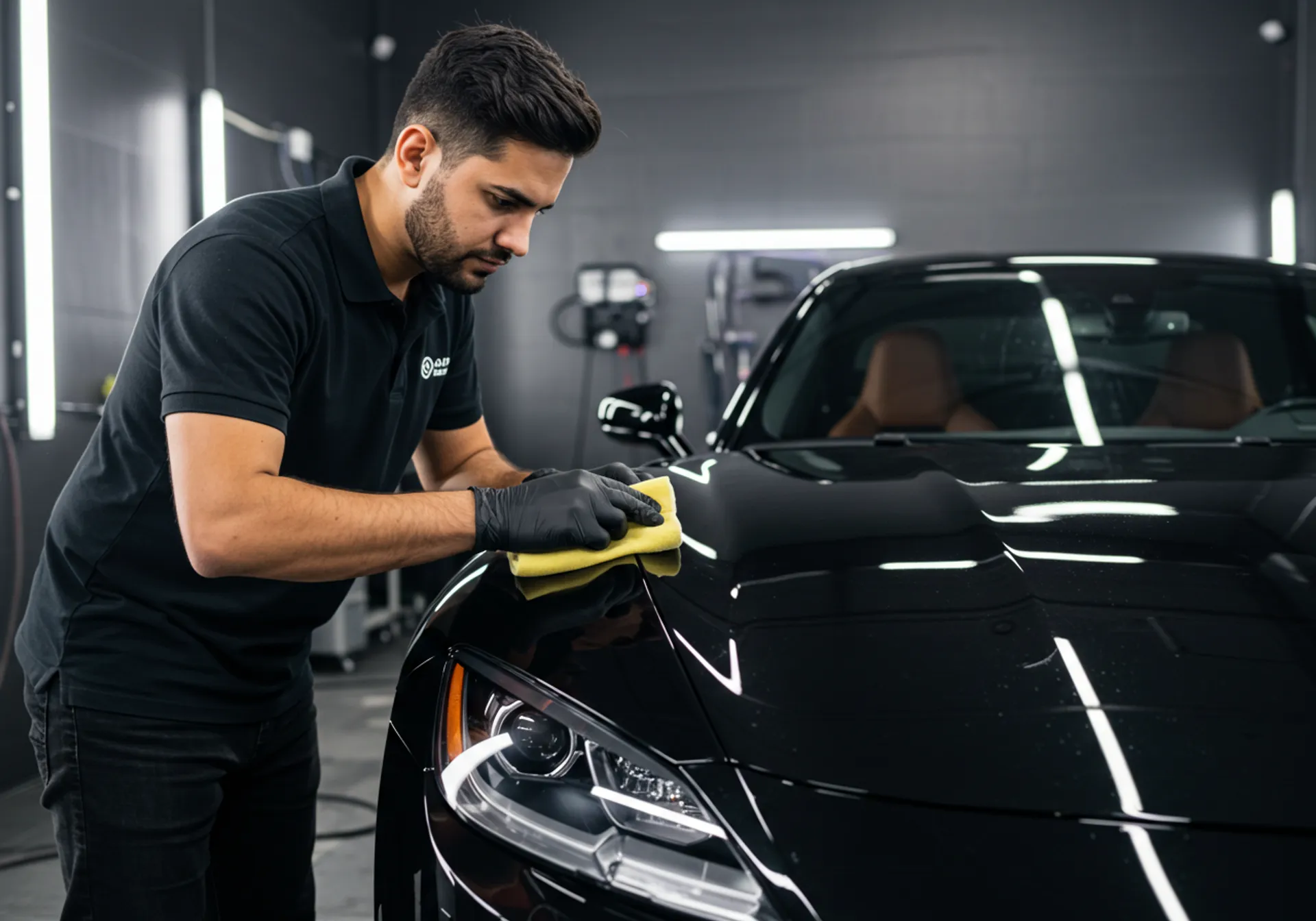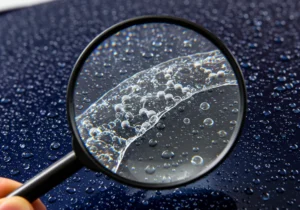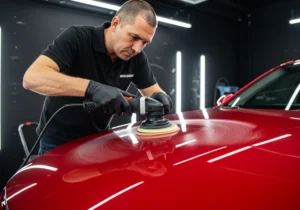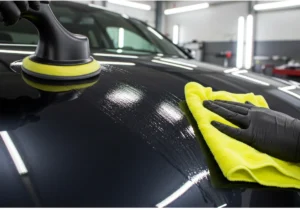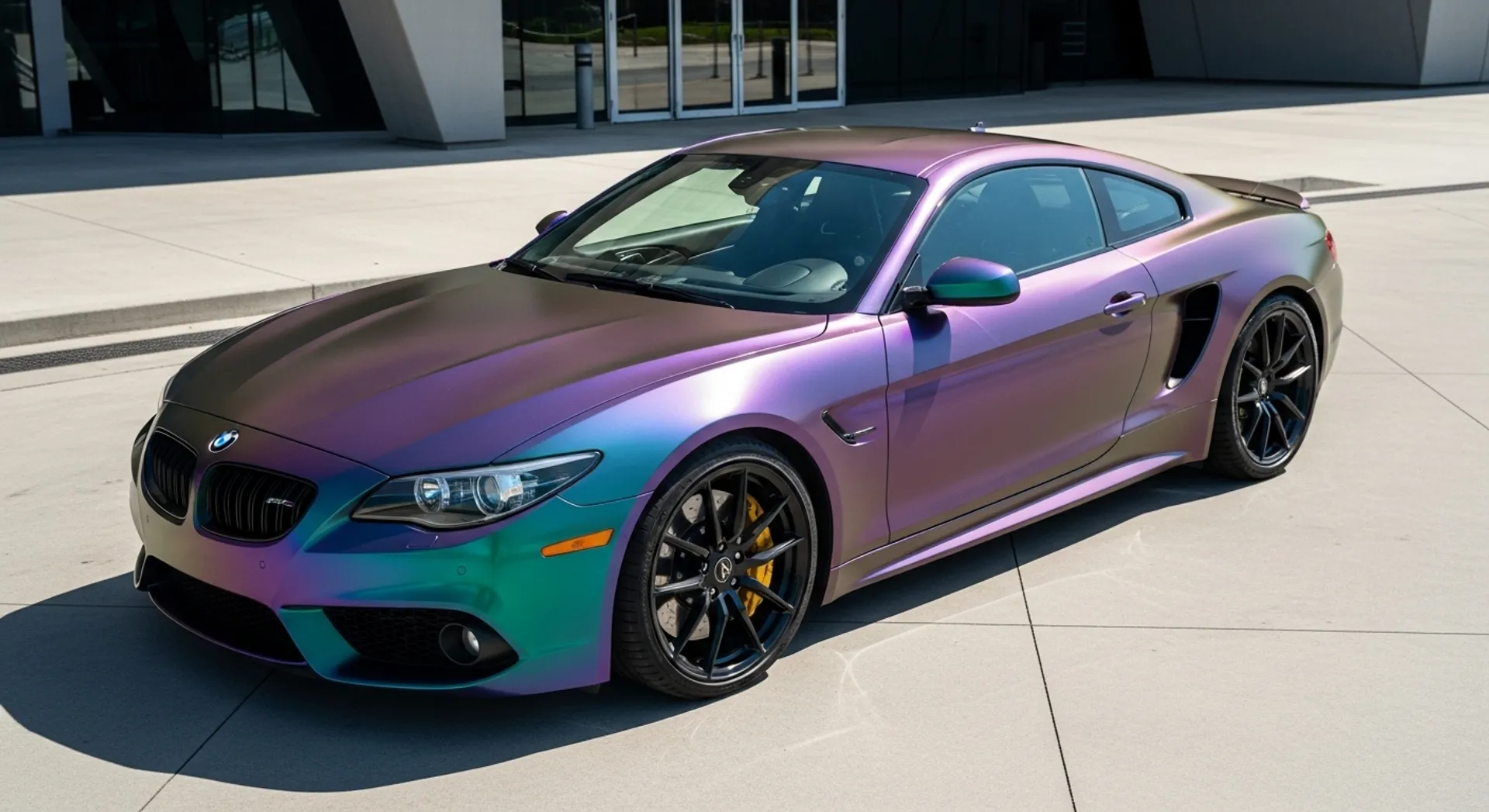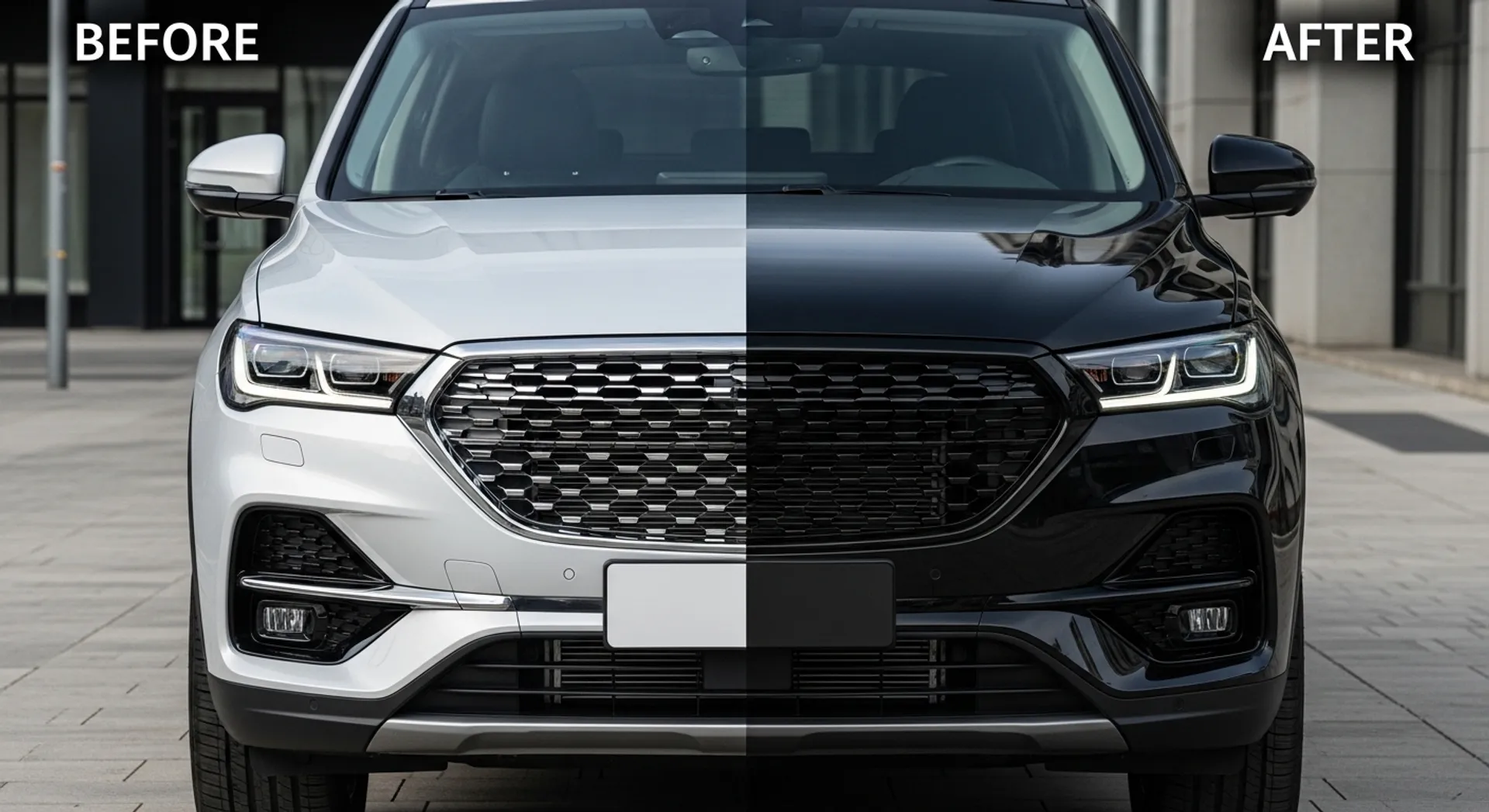Ceramic coating for cars has become increasingly popular among car enthusiasts. This advanced technology involves applying a liquid polymer to the vehicle’s surface, which chemically bonds with the paint to form a hard, transparent layer.
Key Benefits:
- Superior Protection: Offers better protection compared to traditional methods like waxing or sealing.
- Longevity: Can last from 3 to 5 years or more, depending on product quality and maintenance.
- Enhanced Aesthetics: Provides a showroom-like finish with enhanced gloss and depth of color.
Having a comprehensive guide is crucial to understanding the process, advantages, and maintenance tips for ceramic-coated vehicles. This ultimate guide aims to provide you with all the necessary information to make an informed decision and maintain your car’s pristine condition.
Understanding Ceramic Coating: The Science Behind It
Ceramic coating technology stands out due to its unique chemical structure and the way it interacts with automotive paint. When you apply a ceramic coating, you’re essentially working with a liquid polymer that contains advanced silicon dioxide (SiO₂) compounds. These molecules play a critical role in how ceramic coating works.
How Ceramic Coating Works
Here’s a breakdown of the process:
- Liquid Polymer Application: The process begins by spreading the liquid polymer evenly across the car’s painted surface.
- Chemical Bonding: Once applied, the ceramic coating undergoes a chemical reaction where the polymers bond directly to the paint molecules. This isn’t just surface-level adhesion — it’s an actual covalent bond formed at the molecular level.
- Formation of a Transparent Layer: As the coating cures, it forms a hard, invisible shield that is only microns thick. This transparent layer is what provides protection without altering your vehicle’s original color or finish.
Key Benefits of Ceramic Coating
The science behind ceramic coatings translates into real-world advantages for your vehicle:
- Enhanced Hydrophobic Properties: Water, mud, and grime bead up and slide off instead of sticking to the surface. This hydrophobic effect means fewer water spots and easier cleaning after rain or washing.
- Resistance to Environmental Contaminants: The chemically-bonded transparent layer acts as armor against harsh elements — UV rays won’t fade or oxidize your paint, acid rain can’t etch into the clearcoat, and bird droppings or tree sap are less likely to cause permanent damage.
- Durability Over Time: Thanks to the robust nature of the chemical bond, this protective layer remains intact for years rather than months.
Understanding this technology highlights why liquid polymer-based ceramic coatings outperform traditional waxes or sealants in both protection and longevity.
Advantages of Choosing Ceramic Coating for Your Vehicle
Ceramic coating offers numerous advantages that make it a superior choice for car owners seeking long-term protection and aesthetic enhancement.
Superior Protection
Ceramic coating provides excellent protection from a wide range of environmental contaminants that can damage your car’s paint. These include:
- UV Rays: Prolonged exposure to the sun can cause your car’s paint to fade and oxidize. Ceramic coatings shield the paint from harmful UV rays, preserving its original color and finish.
- Acid Rain: Acid rain can etch into the paint surface, leading to dullness and deterioration. A ceramic coating forms a barrier that prevents acid rain from causing damage.
- Bird Droppings and Tree Sap: Both are highly acidic and can cause permanent damage if not removed promptly. The hydrophobic properties of ceramic coatings ensure these contaminants slide off easily, reducing their impact on the paint.
- Other Harmful Substances: Road salt, tar, and industrial fallout are other common contaminants that ceramic coatings protect against.
Long-lasting Durability
One of the standout benefits of ceramic coating is its durability. Unlike traditional waxes or sealants that need frequent reapplication, a well-maintained ceramic coating can last between 3 to 5 years or even longer. This longevity is due to the strong chemical bond formed between the coating and the car’s paint surface, creating a hard, protective layer that withstands various environmental challenges.
Enhanced Gloss and Depth of Color
Ceramic coatings significantly enhance the visual appeal of your vehicle. The coating creates a deep, glossy finish that gives your car a showroom-like appearance. This enhanced gloss not only makes your vehicle look more attractive but also helps maintain its value by keeping the paint in pristine condition.
Choosing ceramic coating means investing in superior protection, long-lasting durability, and an unparalleled glossy finish for your vehicle.
The Application Process Explained: From Surface Preparation to Curing Time
Applying ceramic coating is a multi-step process that demands patience, attention to detail, and a controlled environment. Each stage plays a critical role in achieving the durable, high-gloss protection promised in The Ultimate Guide to Ceramic Coating for Cars.
1. Surface Preparation: Deep Cleaning and Decontamination
A pristine surface is non-negotiable for proper bonding. Start with a thorough wash using pH-neutral shampoo to strip away surface dirt and existing waxes. Move on to mechanical decontamination — clay bars or mitts physically lift embedded contaminants like tar, iron particles, or industrial fallout that regular washing misses.
- Why it matters: Even microscopic debris can prevent the coating from adhering evenly, leading to premature failure or uneven gloss.
- Example: Skipping this step often results in high spots or patchy protection.
2. Paint Correction: Polishing Out Imperfections
After decontamination, inspect the paint under direct light for swirl marks, scratches, or oxidation. Use machine polishers and appropriate compounds to correct these flaws. This phase requires skill; improper correction can leave holograms or burn marks.
- Importance: Ceramic coatings lock in whatever is present on the paint. Any imperfection becomes permanent once coated.
- Tip: Professional-grade inspection lights reveal defects invisible under typical garage lighting.
3. Application of the Ceramic Coating
With the surface perfected, move to the application itself:
- Work in small sections (e.g., one panel at a time).
- Apply a few drops of coating onto an applicator pad.
- Spread evenly in cross-hatch patterns.
- Wait for the recommended flash time (usually 1–5 minutes).
- Buff off residue with a clean microfiber towel before it hardens.
Multiple layers can enhance both protection and visual depth. Allow each layer sufficient curing time as specified by the manufacturer before reapplying.
4. Curing Time: Letting the Coating Set
Once all layers are applied, avoid water exposure for at least 48 hours — this allows initial drying. Full chemical curing can take up to seven days, depending on ambient temperature and humidity.
Proper curing is vital; premature exposure to moisture risks compromising both appearance and longevity.
The meticulous nature of this multi-step process sets ceramic coatings apart from simple wax jobs, ensuring your vehicle enjoys maximum durability and gloss without compromise.
Cost Factors to Consider When Investing in Ceramic Coating Services
When considering ceramic coating for your vehicle, it’s important to understand the price range and factors that can influence the cost. Professional ceramic coating services are generally more expensive compared to traditional waxing. Here’s a breakdown of the key elements impacting the final price:
1. Condition and Size of Your Vehicle’s Paintwork
- The overall condition of your car’s paint can significantly affect the cost. Vehicles with extensive scratches, swirl marks, or oxidation may require additional paint correction work before applying the ceramic coating, increasing labor time and costs.
- Larger vehicles like SUVs, trucks, or vans will typically cost more due to their greater surface area.
2. Number of Layers Applied
Applying multiple layers of ceramic coating can enhance protection and durability, but will also increase the price. Each additional layer requires more product and application time.
3. Type of Surfaces Being Coated
Coating complex areas such as wheels, trim, and other intricate parts can demand extra time and expertise. These surfaces often need specialized attention to ensure thorough coverage and effective protection.
Professional ceramic coating services can range from approximately $800 to over $4,000, depending on these variables. It is essential to obtain detailed quotes from reputable detailers to ensure you understand what is included in their service package.
Maintaining Your Ceramic-Coated Vehicle: Essential Tips for Long-Lasting Results
To keep your ceramic-coated vehicle in optimal condition, follow these essential maintenance tips:
1. Use pH-Neutral Shampoos
During routine washes, employ pH-neutral shampoos specifically formulated for ceramic coatings. These products are designed to clean without stripping away the protective layer. Harsh chemicals or abrasive cleaners can damage the coating and reduce its effectiveness.
2. Regular Washing
Wash your vehicle every 1-3 weeks to prevent the buildup of dirt and grime. This regular washing schedule helps maintain the hydrophobic properties of the ceramic coating, ensuring water and contaminants continue to bead off the surface.
3. Inspect and Reapply Maintenance Spray Sealant
Routinely inspect your ceramic-coated car for any signs of wear or degradation. If recommended by the product manufacturer, reapply a maintenance spray sealant to rejuvenate the coating and extend its lifespan. These spray sealants provide an additional layer of protection and help maintain the glossy finish.
By adhering to these maintenance practices, you maximize the longevity and benefits of your ceramic coating, keeping your vehicle looking pristine for years to come.
DIY Kits vs Professional Services: Making an Informed Choice for Your Car’s Ceramic Coating Needs
When considering ceramic coating for your car, you have the option of using DIY kits available from aftermarket suppliers or opting for professional application services by experienced detailers. Each approach has its own set of pros and cons.
DIY Ceramic Coating Kits
Pros:
- Cost-effective: Generally cheaper than professional services.
- Convenience: Apply the coating at your own pace and schedule.
- Learning Experience: Gain hands-on experience and understanding of the coating process.
Cons:
- Skill Level Required: Requires a certain level of skill and patience to achieve optimal results.
- No Warranty Coverage: Most DIY kits do not come with a warranty.
- Risk of Errors: Potential for mistakes such as improper surface preparation or uneven application.
Professional Application Services
Pros:
- Expertise: Experienced detailers ensure high-quality application with optimal adhesion and finish.
- Warranty Coverage: Many professional services offer warranties on their work.
- Time-Saving: Saves you the time and effort involved in the application process.
Cons:
- Higher Cost: Professional services can be significantly more expensive, often ranging from $800 to over $4,000.
- Scheduling: Requires scheduling an appointment and potentially leaving your car at the detailer’s shop.
Choosing between DIY kits and professional services depends on factors like your budget, skill level, and personal preference for convenience versus hands-on involvement. Both options aim to provide long-lasting protection for your vehicle’s paint, enhancing its appearance and durability.
Conclusion
Investing in high-quality ceramic coating is a smart choice for car owners looking for long-lasting protection and improved appearance. This advanced technology provides:
- Protection against environmental factors such as UV rays, acid rain, and bird droppings.
- Long-lasting durability, often exceeding 3 to 5 years with proper care.
- A beautiful, showroom-like finish that enhances your vehicle’s shine and color.
If you’re unsure about how to apply it or maintain it, getting professional assistance guarantees the best results and peace of mind.
This ultimate guide to ceramic coating for cars has all the information you need to make an informed decision, whether you choose DIY kits or professional services. Give priority to your car’s protection and appearance by considering ceramic coating as a worthwhile investment.

